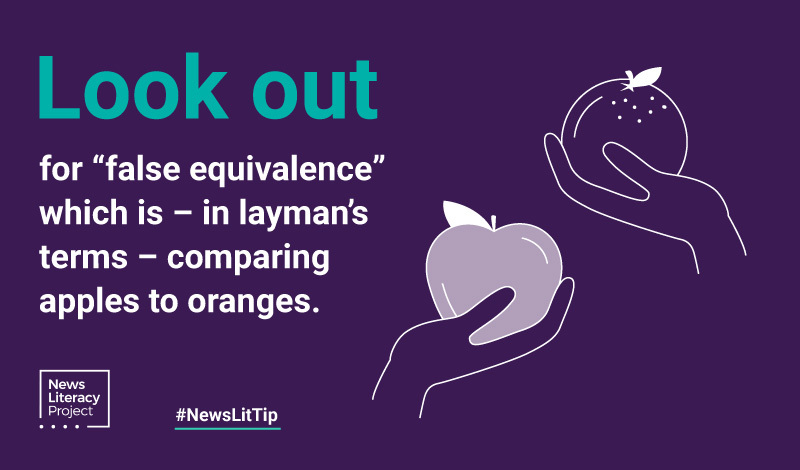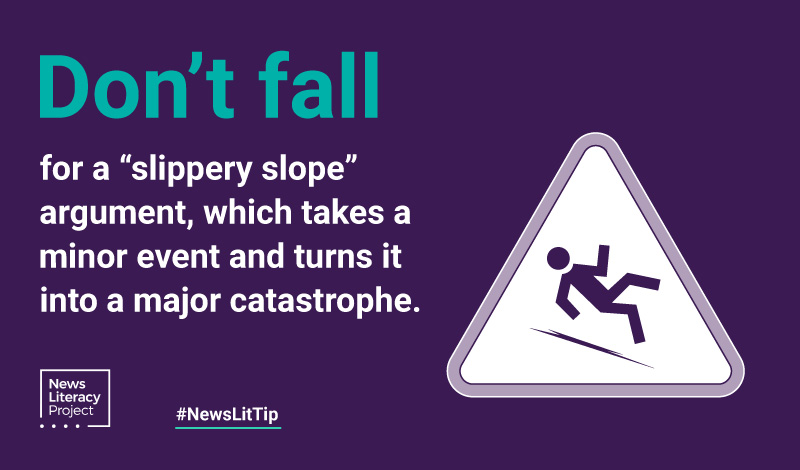
News Lit Tips
One thing leads to another, and sometimes that’s wrong

Picture yourself at the top of a grassy hill. You’re enjoying the view, but it’s time to head home. “Stop!” someone near you calls out. “Don’t move. People fall, and if you take a few steps, you’ll end up hurt.”
That is a basic description (and splendid imagery) for the logical fallacy known as the slippery slope argument, which starts with an initial assumption and then follows a crooked path of ideas to an often illogical conclusion. Like other logical fallacies, slippery slope arguments reflect a lapse in critical-thinking skills.
Perhaps, as you stand there atop the hill considering that advice, you think: What if it’s true? The problem in logic lies in the assumption that one step will inevitably lead to another incremental step, and another, and another, ending up in a bad result. As RationalWiki puts it: “A leads to B which leads to C which leads to D which leads E which leads to zebras having relations with elephants.“
Here are a couple of examples of a slippery slope argument: “We have to stop the tuition increase! The next thing you know, they’ll be charging $40,000 a semester!” And: “You can never give anyone a break. If you do, they’ll walk all over you.”
Such arguments are not always fallacious; those that lay out precisely the causal link between one step and the next might be correct. But the cause of how one step leads to the other needs to be based in fact.
An article in Lifehacker defines an assortment of logical fallacies and suggests how to handle this one: “To avoid slippery slopes, think about how likely the scenario is and if it could be supported by facts and statistics.”
So head down the grassy slope without falling for the illogical leap that says such walks always lead to injury.



